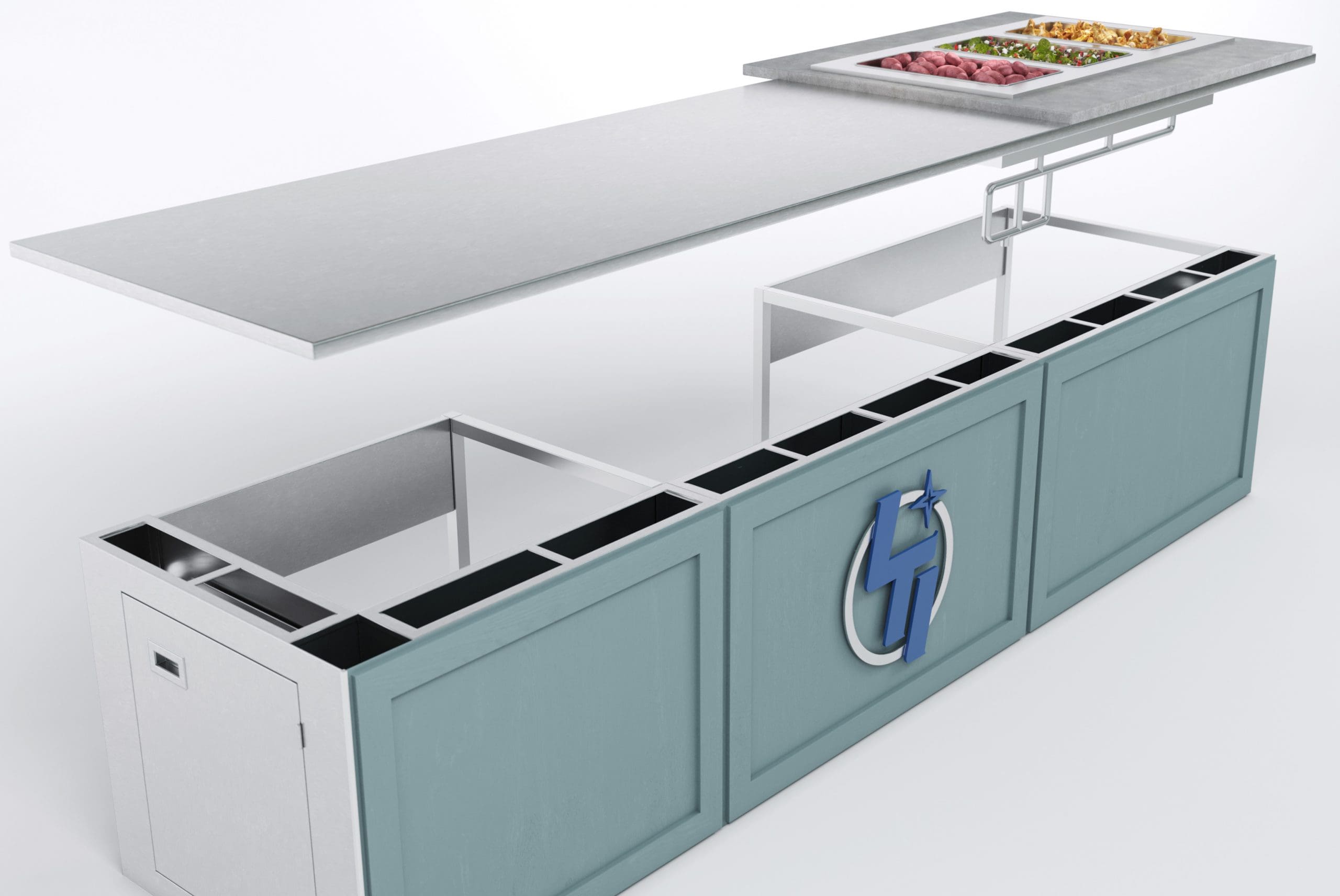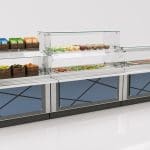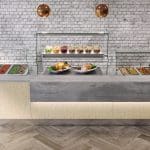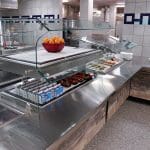LTI knows that choosing and designing a serving counter can be a challenging process, with…
4 reasons general contractors shouldn’t build restaurant serving counters

In many restaurant construction projects, building the front-serve counter — the literal front line of the restaurant experience — falls to the general contractor.
What results is often a wall constructed like any other stick-built interior wall, with holes drilled in the wood framing to make way for electrical, water or gas lines. It’s functional (mostly) and gets the job done (usually), but there are common problems and shortfalls that can arise from this kind of construction.
Here are four reasons you may not want your general contractor to build your front-serve counter — and what to do instead.
More prone to errors
A site-built serving counter has the potential for mistakes or miscommunication that can lead to construction errors. These range from the minor — poor alignment between sections of counter — to the significant — forgetting to allot space in the wall for electrical or water lines.
Even a nationwide quick-serve chain with a robust engineering team couldn’t stop these issues from happening. In several of their locations, food shields were installed too close or too far away from the food, threatening food safety guidelines. And finishes and components were not consistent across locations.
Brand inconsistency
Especially for regional or developing chains (and even occasionally for large, well-developed chains), construction plans may include some gray area or opportunities for interpretation from the builder. This can lead to brand inconsistency from location to location.
One store will have electric lines run through the wall and hidden from view. The next will have a conduit affixed to the outside of the wall, creating a cleaning nightmare.
Tile, laminate and other aesthetic flourishes may be applied slightly differently from one contractor to the next, derailing brand continuity.
Counters can even end up being different lengths, potentially causing issues with planned equipment use.
Mystery of cost
When serving counter walls are built by the general contractor or a subcontractor, the price is typically wrapped up into the overall construction cost. Operators have no visibility in pricing for this essential piece of their operation.
Separating out the expense by choosing an alternative approach helps operators better understand and control cost.
Hassle
What the above problems hint at is a general hassle in the traditional approach to designing and building the front-serve counters of quick serve and fast casual restaurants.
A contractor build requires significant coordination among electricians, plumbers and other technicians to ensure they have access at the right time and place to run the necessary lines to support the restaurant’s equipment.
Components like food shields and décor elements must be arranged for and installed separately. And the whole thing needs to come together to create a cohesive customer and employee experience.
Without a very specific plan for builders, operators may end up with an installation that doesn’t quite fit their needs, leaving them to figure out how to just “make it work.”
A better way
There is a better way.
LTI’s UD-Wall is a utility-distribution wall made of heavy-duty stainless steel sections and built with cutouts in the chaseway to accommodate utility connections. Watch the UD-Wall in action.
Because UD-Wall design and construction is all completed in the same factory by the same serving experts, operators can get the perfect counters to meet their needs. Any modifications or adjustments can be made on paper before anything is built in the field, saving money, time and inconvenience.
And once the design is finalized and the wall constructed, installation is quick. Restaurants can go from flat floor to functional front counter in less than a day.
In addition, the steel-constructed walls provide greater cleanability and durability over traditional millwork. And available factory-installed electrical load centers provide a one-point electrical connection.
Learn more and get started designing your solution today.



